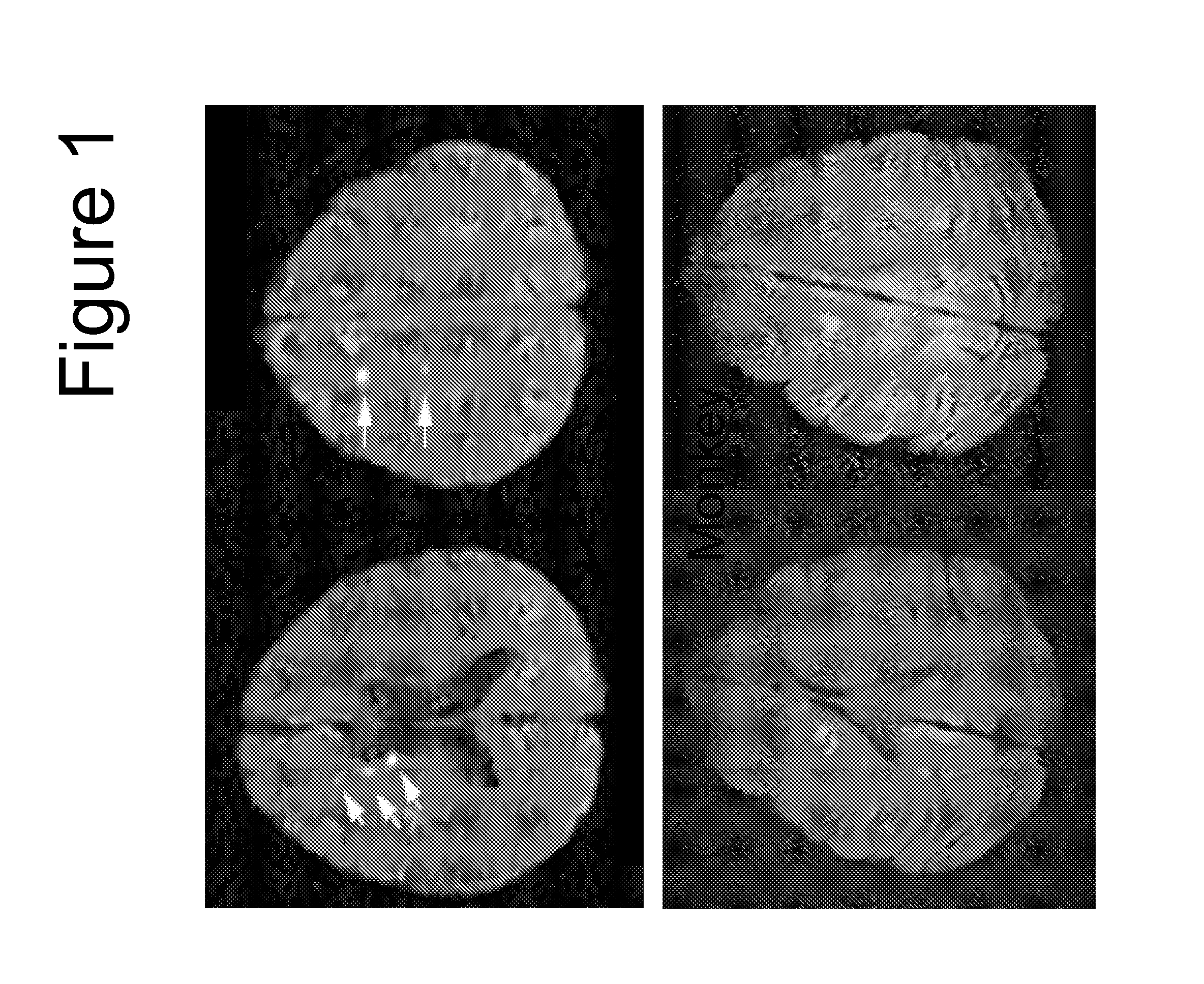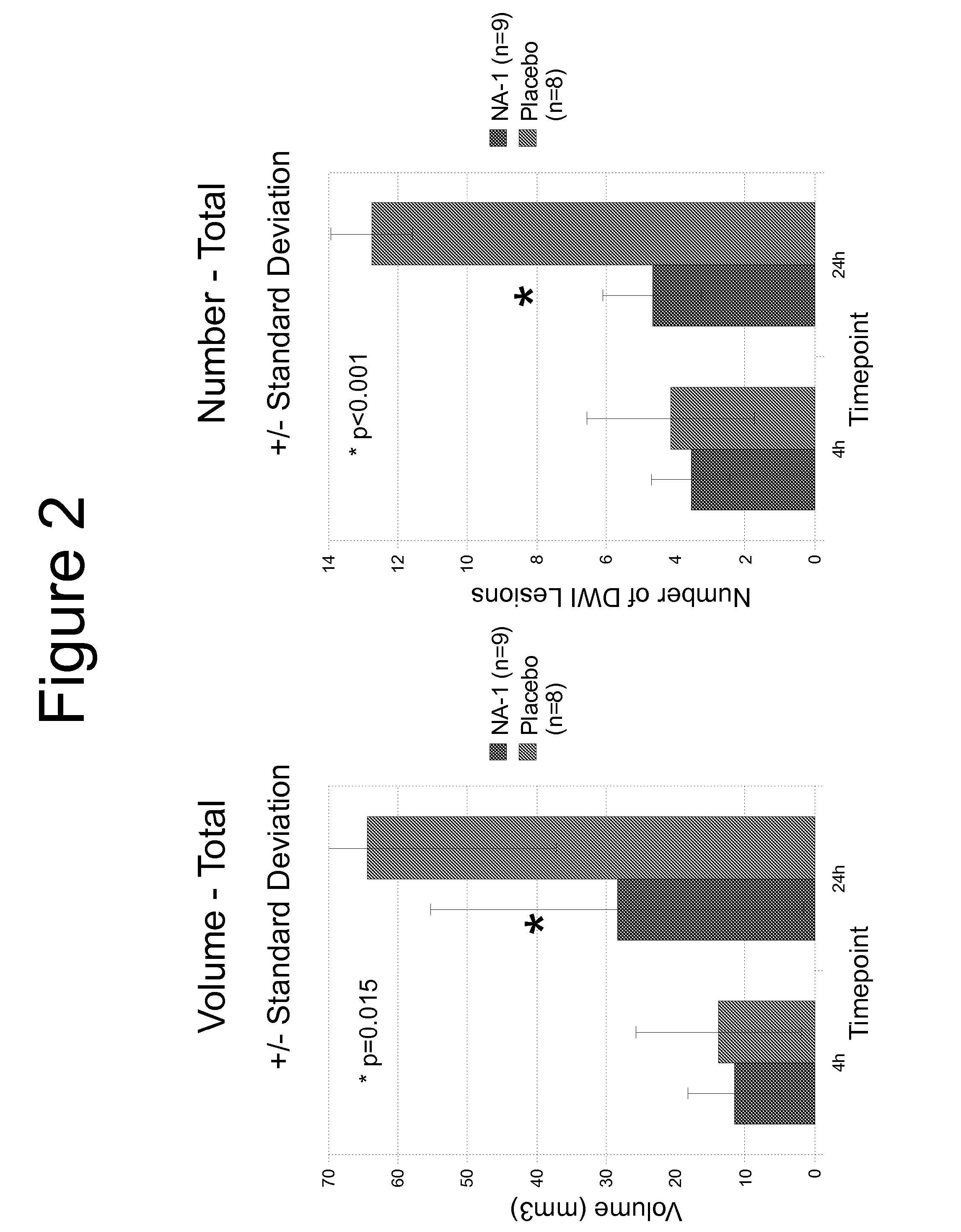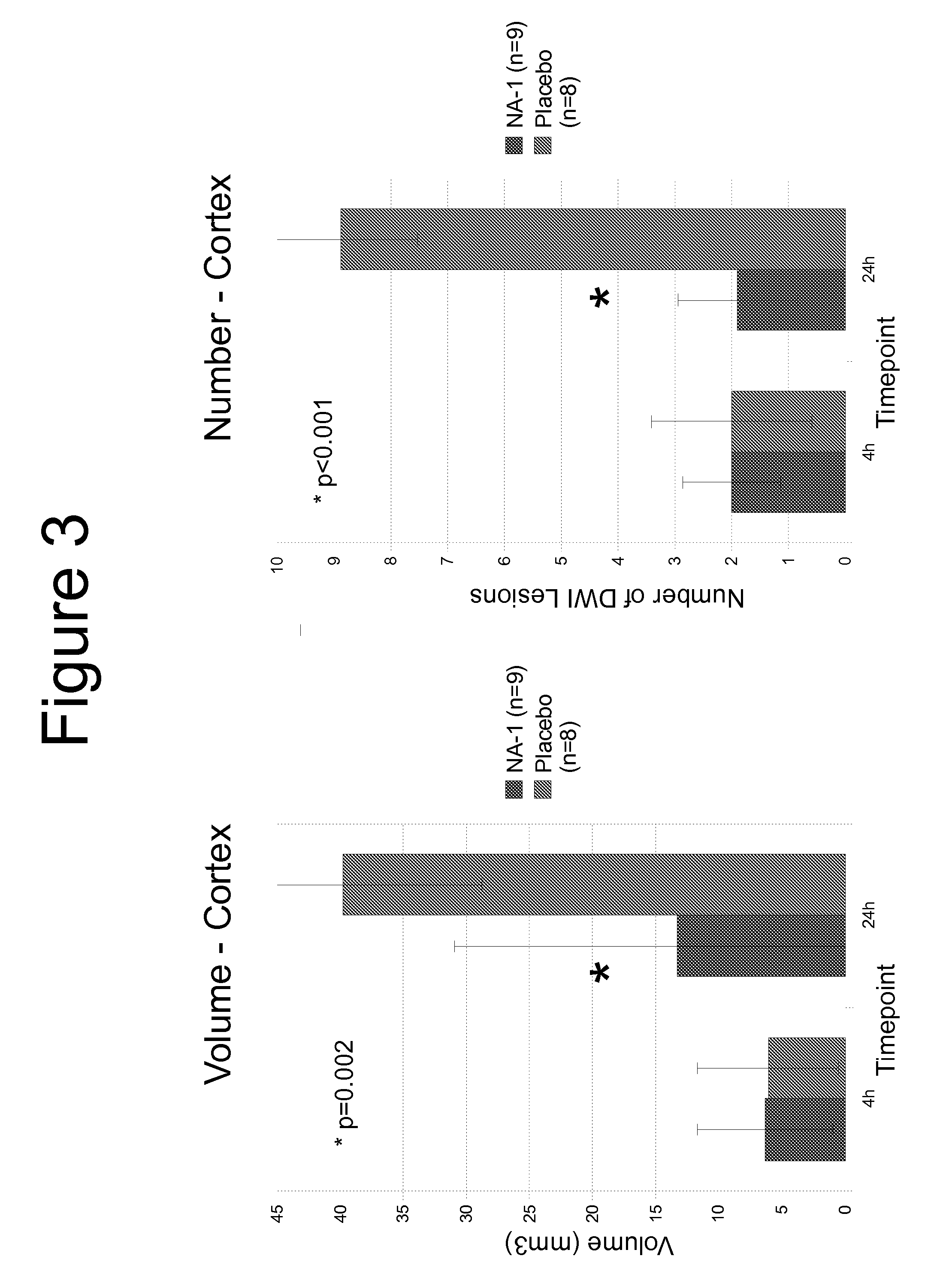Model Systems and Treatment Regimes for Treatment of Neurological Disease
- Summary
- Abstract
- Description
- Claims
- Application Information
AI Technical Summary
Benefits of technology
Problems solved by technology
Method used
Image
Examples
example 1
Primate Model of Ischemic Stroke
[0100]The following example was performed on ten macaques divided into five test subjects and five controls. Each animal was put through the protocol twice with test animals in the first round serving as controls in the second round and vice versa.
[0101]Twenty 100-micron polystyrene spheres were delivered into an intracerebral vessel of each animal to induce embolic stroke. One hour after introducing the sphere, the animals were treated with Tat-NR2B9c (2.6 mg / kg) or vehicle control. The animals were then subject to MRI brain analysis and neurological examination at 4 hr, 24 hr and 14 days after introduction of the spheres.
[0102]After 14-28 days, the procedure was repeated with test animals serving as controls and vice versa.
[0103]FIG. 1 shows the MRI scan of infarctions 24 hr post injection of spheres in a control animal compared with a human having received endovascular surgery to insert a coil to repair an aneurysm. The number, size and appearance ...
example 2
[0105]Tat-NR2B9c was administered to rats at 50 mg / kg and infusion times of 3 min or 60 min. FIG. 4 shows changes in blood pressure following administration. In rats infused over 3 min, the blood pressure decreased by about 50% before recovering over a period of 90 min. For rats infused over an hour there was only a slight reduction in blood pressure, which also recovered over a period of hour.
[0106]Different infusion times were also compared for efficacy in a rat model of stroke in which adult Sprague Dawley rats (10-12 weeks old) (males ˜300 g, females ˜250 g) were fasted for 12-18 hours before being subjected to permanent pial vessel occlusion of 3 terminal branches of the Middle Cerebral Artery over the Whisker Barrel Cortex (P3VO). The protocol for analysis of this rat model has been described in WO / 2008 / 008348. Tat-NR2B9c was administered at 7.6 mg / kg i.v. after vessel occlusion in comparison with vehicle. Two periods of infusion were compared, 5 min and 1 hour. F...
example 3
Phase I Clinical Trial
[0107]We carried out a Safety, Tolerability and Pharmacokinetic Study of Tat-NR2B9c in humans. Subjects were either normal, healthy, non-smoking males or post-menopausal or surgically sterile female subjects with a minimum age of 18 years. The subjects were either administered Tat-NR2B9c, Lot #: 124-134-001B, or were given placebo (Phosphate Buffered Saline), Lot #: 124-134-001A, administered as an intravenous infusion (10±1 minutes). Four subjects were dosed in each of Cohorts 1 to 3, and 10 subjects were dosed in each of Cohorts 4 to 8. All 62 subjects completed the study.
Methods
Blood Draw Timepoints:
[0108]During the study period, 11 blood samples were collected for pharmacokinetic analysis from each subject at the following timepoints: 0.00 (pre-dose), 0.08 (5 minutes), 0.17 to 0.25 (10 to 15 minutes, precisely at the end of each individual drug infusion), 0.33 (20 minutes), 0.50, 0.75, 1.00, 2.00, 6.00, 12.00, and 24.00 hours post-dose. In addition, 8 blood...
PUM
| Property | Measurement | Unit |
|---|---|---|
| Temperature | aaaaa | aaaaa |
| Time | aaaaa | aaaaa |
| Time | aaaaa | aaaaa |
Abstract
Description
Claims
Application Information
 Login to View More
Login to View More - R&D
- Intellectual Property
- Life Sciences
- Materials
- Tech Scout
- Unparalleled Data Quality
- Higher Quality Content
- 60% Fewer Hallucinations
Browse by: Latest US Patents, China's latest patents, Technical Efficacy Thesaurus, Application Domain, Technology Topic, Popular Technical Reports.
© 2025 PatSnap. All rights reserved.Legal|Privacy policy|Modern Slavery Act Transparency Statement|Sitemap|About US| Contact US: help@patsnap.com



